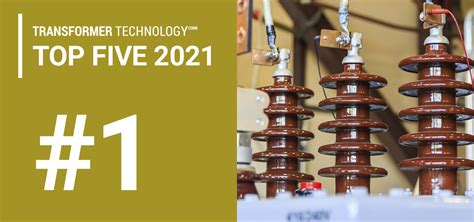The concept of justice has undergone significant transformations over the years, driven by advances in technology, changes in societal values, and shifting attitudes towards punishment and rehabilitation. The correctional system, in particular, has been at the forefront of this transformation, with technology playing an increasingly crucial role in shaping the future of justice. In this article, we will explore the rise of correctional technology and its impact on the justice system.
The Evolution of Correctional Technology

The use of technology in corrections dates back to the early 20th century, when institutions began to adopt basic technologies such as telephones, radios, and televisions. However, it wasn't until the 1980s and 1990s that correctional technology started to gain momentum, with the introduction of electronic monitoring systems, CCTV cameras, and computerized management systems.
In recent years, the pace of technological innovation in corrections has accelerated, driven by advances in fields such as artificial intelligence, biometrics, and data analytics. Today, correctional facilities are using a range of cutting-edge technologies, including drones, virtual reality, and blockchain, to enhance security, improve rehabilitation outcomes, and reduce recidivism rates.
Key Drivers of Correctional Technology Adoption
Several factors have contributed to the growing adoption of correctional technology, including:
- Increased focus on rehabilitation: As the justice system shifts its focus from punishment to rehabilitation, technology is playing a critical role in supporting this transition. By providing access to educational and vocational training programs, counseling services, and other rehabilitative resources, correctional facilities can help offenders develop the skills and support networks they need to succeed upon release.
- Growing need for security and safety: Correctional facilities face unique security challenges, including the risk of violence, contraband smuggling, and escapes. Technology, such as biometric identification systems and surveillance cameras, can help mitigate these risks and create a safer environment for both staff and offenders.
- Pressure to reduce costs and improve efficiency: Correctional facilities are under increasing pressure to reduce costs and improve efficiency, while also maintaining high standards of care and rehabilitation. Technology can help achieve these goals by streamlining administrative processes, reducing labor costs, and improving resource allocation.
Applications of Correctional Technology

Correctional technology has a wide range of applications, including:
- Electronic monitoring: Electronic monitoring systems use GPS tracking, ankle bracelets, and other technologies to monitor an offender's location and movement. This can help reduce the risk of escape, ensure compliance with court orders, and support rehabilitation by allowing offenders to participate in community-based programs.
- Surveillance and security: Surveillance cameras, motion detectors, and other security technologies can help prevent violence, contraband smuggling, and escapes. These systems can also provide valuable evidence in the event of an incident.
- Rehabilitation and education: Technology can support rehabilitation by providing access to educational and vocational training programs, counseling services, and other resources. This can include online courses, virtual reality experiences, and mobile apps.
- Healthcare and medical services: Correctional facilities can use technology to improve healthcare outcomes, including telemedicine services, electronic health records, and medical kiosks.
Benefits of Correctional Technology
The adoption of correctional technology has numerous benefits, including:
- Improved security and safety: Technology can help reduce the risk of violence, contraband smuggling, and escapes, creating a safer environment for both staff and offenders.
- Enhanced rehabilitation outcomes: By providing access to educational and vocational training programs, counseling services, and other resources, technology can help offenders develop the skills and support networks they need to succeed upon release.
- Reduced costs and improved efficiency: Technology can help streamline administrative processes, reduce labor costs, and improve resource allocation, making correctional facilities more efficient and cost-effective.
- Increased transparency and accountability: Technology can provide valuable insights into correctional facility operations, helping to identify areas for improvement and promote transparency and accountability.
Challenges and Limitations of Correctional Technology

While correctional technology has many benefits, there are also several challenges and limitations to consider, including:
- Cost and funding: Implementing and maintaining correctional technology can be expensive, requiring significant investment in hardware, software, and training.
- Cybersecurity risks: Correctional facilities are vulnerable to cybersecurity risks, including hacking, data breaches, and malware attacks.
- Data management and analytics: Correctional facilities must have effective data management and analytics systems in place to make the most of their technological investments.
- Digital divide: Not all offenders have equal access to technology, creating a digital divide that can limit the effectiveness of correctional technology.
Future Directions for Correctional Technology
As correctional technology continues to evolve, we can expect to see several future directions, including:
- Increased use of artificial intelligence and machine learning: AI and machine learning can help correctional facilities analyze data, identify trends, and make more informed decisions.
- Growing adoption of biometrics and surveillance technologies: Biometrics and surveillance technologies can help improve security and safety in correctional facilities.
- Greater emphasis on rehabilitation and reentry: Correctional technology will continue to play a critical role in supporting rehabilitation and reentry, helping offenders develop the skills and support networks they need to succeed upon release.





Conclusion
In conclusion, correctional technology is transforming the justice system, providing new opportunities for rehabilitation, reentry, and public safety. While there are challenges and limitations to consider, the benefits of correctional technology are clear. As we move forward, we can expect to see continued innovation and growth in this field, with a greater emphasis on rehabilitation, reentry, and the use of emerging technologies like artificial intelligence and biometrics.
What is correctional technology?
+Correctional technology refers to the use of technology in correctional facilities to improve security, rehabilitation, and reentry outcomes.
What are some examples of correctional technology?
+Examples of correctional technology include electronic monitoring systems, surveillance cameras, biometric identification systems, and virtual reality experiences.
What are the benefits of correctional technology?
+The benefits of correctional technology include improved security and safety, enhanced rehabilitation outcomes, reduced costs and improved efficiency, and increased transparency and accountability.
